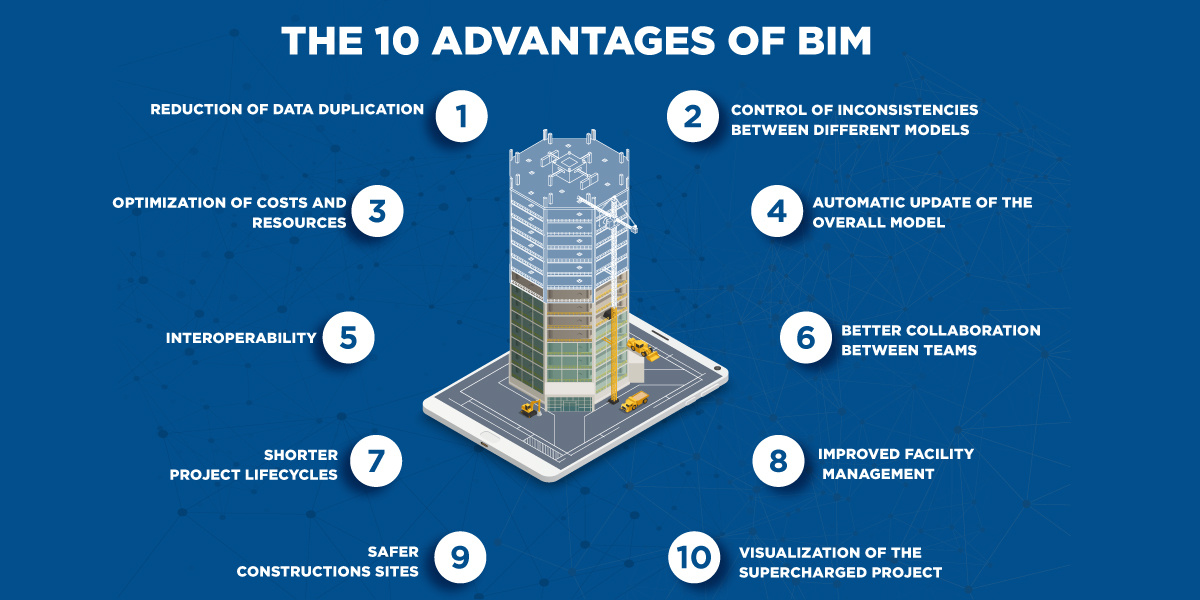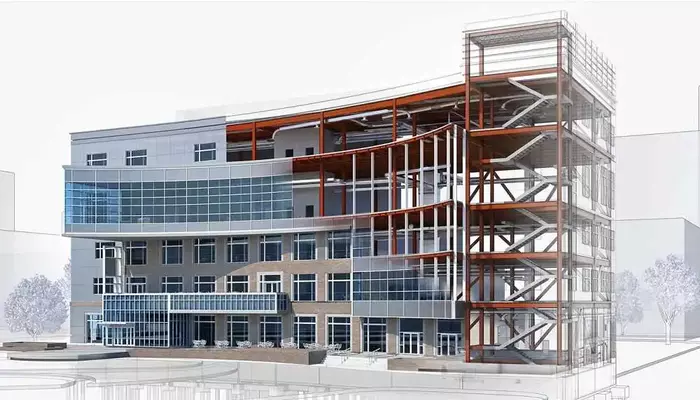Top 20 Faqs About BIM By Architects Answered 2025

Table of Contents
We all know that technologies are no fads, and it's only a matter of time until all disorganised industries undergo complete digitisation. As AEC professionals we’ve been listening about Building Information Modelling (BIM) in hushes and how it has impacted the construction industry.
Call BIM synonymous with an efficient workflow as it offers a platform for stakeholders to collaborate, communicate and optimise construction processes. BIM can be employed in creating, maintaining, and utilising building data via a construction project lifecycle. Among countless faqs on BIM for architects, we have churned out a few questions to address some common concerns. But, before we move ahead, it is important to understand if...
BIM Really Does Work?

BIM is not limited to just architects. BIM means teamwork and it allows various stakeholders to collaborate on the same model at the same time, ensuring better coordination and fewer revisions.
- BIM helps with saving costs and resources
- BIM assures timely project deliveries and great efficiency
- BIM accelerates productivity and the scope of pre-fabricating
- BIM improves coordination and collaboration
- BIM helps in sustainable construction
- BIM promises high-quality and precise results
We understand that you might still have questions. Run through these FAQs on BIM for architects and learn more as you read. The more you know, the better your career path would look like.
1. What is the best way to learn BIM for free?
The best way to learn BIM is by utilising online platforms and resources. One can learn BIM from YouTube tutorials created by educators and professionals. There are many online platforms like Coursera, EdX, etc, offering free introductory BIM courses. But, for an in-depth understanding, taking a course that suits your convenience is the best way to learn BIM efficiently. Novatr is one platform that offers comprehensive BIM courses for architects and civil engineers that help you upskill, stay updated with the latest industry trends, and bag better opportunities.
2. How much will it cost to learn BIM?
The cost of learning a BIM architecture course is completely subjective and depends on the learning method. A certification course from an institution or university can be costly. However, there are multiple online courses available that you can opt for according to your convenience. Moreover, investing in BIM software like Revit can also help you understand working with BIM tools and workflows. In the end, the cost of learning BIM depends on the expertise level you are looking forward to achieving and the kind of resources you can make use of.
3. What is BIM in architecture and why should engineering students know about it?
Building Information Modelling or BIM is a digital draft of the functional and physical characteristics of infrastructure. It refers to a collaborative process that allows project stakeholders to join forces on a single 3D model. Engineering students need to learn about BIM because not only is it a wave of revolution in the AEC industry but the adoption of BIM is also growing each day. Proficiency in BIM can equip students with in-demand tech-first skills that are revolutionising the modern construction industry.
4. Are there any good training centres to study BIM in India?
Yes, there are multiple good training centres in India offering BIM courses. These centres provide both online and offline training covering in-depth knowledge covering various aspects of BIM software and applications in architecture. Novatr is an authorised Autodesk Training Centre that helps learners upskill with Autocad architecture software and BIM software and tools.
5.How to learn BIM and 3D modelling? What are the best training resources?
Building Information Modelling (BIM) is a platform that allows digital and physical data integration to create 3D models of a construction project. BIM can be employed to improve efficiency, quality, collaboration, and sustainability in your work. Here are the best training resources available to learn BIM:
- Online Courses
- Webinars and Podcasts
- Books and Magazines
- Blogs and Forums
- Events and Conferences
Also Read : 10 Types Of Architectural Concepts For An Effective Design Development
6. How long does it take to learn BIM?
A full-time BIM training takes approximately six months to complete, while a part-time course might take up to 12 months to finish. However, if you are eager to upskill with BIM, then a full-time course should be your first choice. However, this choice is completely subjective and is dependent on individual convenience.
7. Which BIM software is better: Archicad or Revit?
Autodesk Revit stands out as the premier BIM software available in comparison to Archicad. Not only does Revit provide multiple features to one’s benefit, it comes with a great price as well. Many AEC professionals use Autodesk Revit BIM software with complete trust.
8. What is the difference between Revit and BIM?
Many confuse BIM with Revit, but Revit is only one of the many software applications under the umbrella of BIM. Revit acts as a tool that assists with efficient design and workflow. On the flip side, Building Information Modelling or BIM is a comprehensive process that works with a 3D database in the form of an information model about the physical building design.
9. How can I be a professional in BIM?
Having a degree in Architecture, Engineering, Construction, or a related industry is fundamental for learning BIM. One can upskill with basic BIM concepts, software, and workflows by enrolling in BIM courses and learning about BIM software tools like Autodesk Revit, Navisworks, ArchiCAD, etc. There are many online and offline BIM courses available and you can pick whatever suits you best.
10. Do you need coding skills to be a BIM designer or BIM manager?
No, one doesn’t need to learn coding skills to be a BIM designer or a BIM manager. However, you can always use this to your advantage. BIM primarily involves utilising specialised software for creating 3D models of construction projects. While designers take care of modelling, the role of a manager is to oversee the entire workflow.
11. How to pursue BIM management as a career?
Building Information Modelling (BIM) is a technology that assists Architecture, Engineering, and Construction (AEC) professionals in gaining access to 3D models and managing digital information. The role of a BIM manager is a senior position that oversees a company’s BIM decision-making process. Let’s now explore the career path of a BIM manager:
- Obtain a degree in the AEC industry or any related field
- Complete an internship to gain entry-level experience in the construction industry
- Invest in your post-graduate education and understand the specifics of this role
- Gain experience in project management
- Learn design and modelling techniques and software
12. Who is a BIM architect?
If simply explained, a BIM architect is someone who specialises in Information Modelling, but this is different from 3D modelling. BIM makes use of data that creates digital twins of the on-site structure, which later helps in collaboration, communication, and better decision-making.
13. How to make a portfolio as a fresher to apply for BIM related job roles?
Just like a design portfolio, one can start preparing their portfolio by saving and documenting models and drawings. Remember to save all the projects that you have worked on in your job or in any BIM architecture courses that you may have signed up for. The better the portfolio, the more insight BIM architecture firms can have into your working experience and your knowledge about BIM workflows. Here are a few ways that you can pick on while making your portfolio as a fresher.
- Defining the purpose of the portfolio
- The kind of content that you add to the portfolio is important. Make sure to add technical over aesthetic content, and use relevant images.
- Highlight your soft skills
- Keep fewer than five projects in your portfolio with adequate and relevant images for smooth visual storytelling.
- Unlike an architectural portfolio, you can skip the concept and design process sketches. Try to focus on your BIM deliverables.
14. What are the typical career paths for people working in BIM?
An experienced draftsman or architect can switch to BIM with a fundamental understanding of BIM. In the field of engineering, one can follow the trajectory of becoming a BIM engineer. One needs to excel in modelling skills and get a clear understanding of BIM tools to be a BIM professional.
15. Things that you should know before stepping into the BIM as a career
One must understand the use of BIM efficiently. It’s important to know that BIM is a workflow and not just software. Revit as a software is one of the tools used under the umbrella of BIM. Information modelling requires a dedicated team that involves all stakeholders including architects, consultants, contractors, and sub-contractors. While the demand for BIM is only expected to rise in the coming years, this might be the right time to upskill.
Also Read : The Best Architecture Portfolios: 10 Inspiring Examples
16. How much can you make as a BIM specialist?
A BIM specialist can earn up to 9LPA on average in India. The salary of a BIM specialist can vary depending on the demand for the skill in the construction industry, the economic conditions, and many other factors. However, BIM specialists tend to earn higher salaries as compared to traditional AEC professionals.
17. How to make a career in BIM as a freelancer?
With freelancers working independently, BIM can be an essential tool while trying to coordinate during a construction project. Here are a few steps that you can follow to make a career in BIM as a freelancer:
1. Undergo BIM training and acquire the required BIM skills2. Building a portfolio is crucial in getting freelance work in BIM
3. Build a network and work on your list of potential clients to secure a regular source of income.
18. Does BIM have scope in future?
Due to the rise in digitisation, the Architecture, Engineering, and Construction (AEC) industry is embracing streamlined and effective methods that are in sync with modern technology. It is anticipated that by 2026, the Building Information Modelling (BIM) market will reach an impressive value of 10.7 billion USD.
19. Can I take BIM modelling as my career? What will be the future?
As a BIM Modeller, you will be playing a crucial role in designing and maintaining a digital twin of a building. This model will be a comprehensive design entailing information from architectural, structural, Mechanical, Electrical, and Plumbing (MEP). So yes, pursuing a career as a BIM modeller is promising.
With the rapid growth seen in the BIM market, there will be more and more demand for BIM-skilled professionals.
20. What is the future of BIM? (India & Worldwide)
In the coming years, BIM adoption is anticipated to grow and become a mandatory practice across the globe. As we talk business, BIM is expected to become mandatory across major centres of construction activity. Many developed countries have already pushed the needle towards ensuring that all new construction projects are built with BIM.
Also Read : Deciphering Architectural Diagrams

 Thanks for connecting!
Thanks for connecting!
.png)

.png)
.jpg)
.webp)



